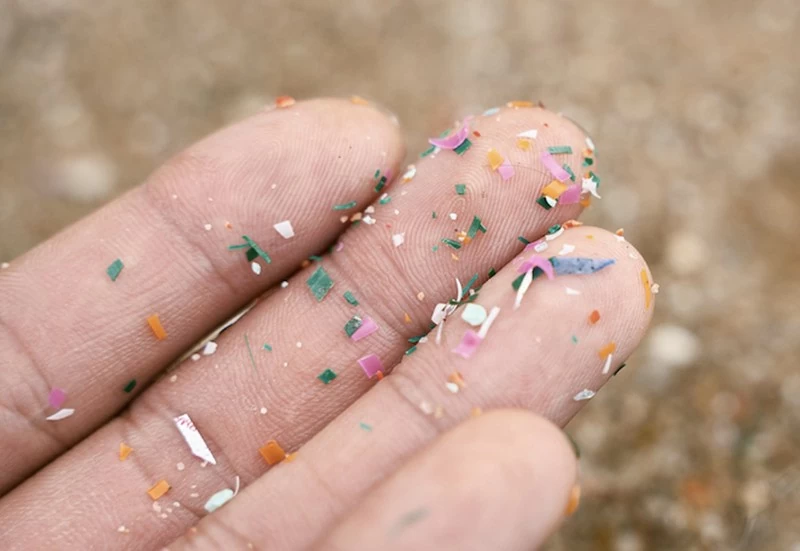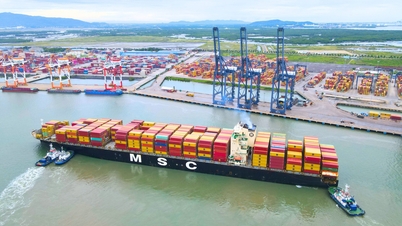The future of water filtration technology sounds bright.
 |
| Microplastics have been detected. |
Microplastics are everywhere—in water, soil, and even in our own bodies—and researchers are still unsure exactly how they affect our health. Worse still, this microplastic waste is incredibly difficult to remove. However, scientists have recently come up with a new solution from a surprising source—sound.
A team of researchers has developed a novel method for cleaning microplastics from water using high-frequency sound waves. Unlike previous ultrasonic filtration techniques, their method can theoretically remove both large and small microplastic particles in a unique two-step process, making plastic-contaminated water safe to drink. The results were presented today at a meeting of the American Chemical Society.
Microplastics are defined as any plastic fragments smaller than 5 mm in diameter. They typically come from larger pieces of trash, such as water bottles, styrofoam cups, or even acrylic paint, as they break down in the environment. For years, no one paid much attention to these tiny pieces of plastic. But in 2004, a landmark study by marine ecologist Richard Thompson documented their presence on 17 different beaches. Since then, they've appeared everywhere researchers look: in the soil, in the ocean, and even in our bodies. "[Scientists] have found microplastics in human blood samples," said Menake Piyasena, an analytical chemist at New Mexico Tech and co-author of the study. "So this is going to have a huge impact in the future."
Scientists still don't have a clear picture of the implications of all these plastics for human health, but it's probably not good. Microplastics have been linked to everything from inflammation to reproductive problems to cancer, although there's still no conclusion on how these tiny polymer fragments might cause these conditions. But this means that since 2019, microplastics have been considered a concern (and a potential public health emergency) by the World Health Organization.
Currently, most microplastics removed from water are captured by filters. But these devices tend to clog; they have to be removed, cleaned, or replaced regularly, which can quickly become costly on a large scale. Piyasena and his lab wanted to find a way to remove microplastics without filters. And they found one: ultrasound.
The new water-washing technology is based on a technique that Piyasena calls "sound focusing".
“That means using sound waves to focus or concentrate particles within a given perimeter,” Piyasena says. In this case, it’s helpful to think of sound not as a soothing piece of music or a conversation, but as force waves with ultrasonic frequencies, higher than the human hearing range. When applied inside a confined area, such as a steel pipe, these waves push small particles together—think of how a loudspeaker might bounce around grains of sand on a beach.
Piyasena's team isn't the first to use ultrasound to remove plastic waste from water. Last year, a group of Indonesian-based researchers tested an "acoustic filter" capable of removing up to 95% of tiny microplastic particles from freshwater samples (the system proved far less effective in saltwater). However, unlike Piyasena's study, this team only tested plastic fragments smaller than 180 micrometers in width. They assumed larger fragments would perform similarly — but Piyasena and his co-authors found this isn't necessarily true.
"The bigger the [plastic], the easier it is to concentrate in some ways," Piyasena said. When suspended in pure freshwater, microplastics of all sizes clumped together in the middle of the tube when the researchers increased the volume of the ultrasound, allowing clean water to flow out of the side tubes. But when they added detergent or fabric softener to the water, the larger microplastics (ranging in diameter from 180 to 300 micrometers) began to clump together on the sides of the channel. In this case, the water in the middle tube remained clean, while the sides remained contaminated with plastic.
To ensure the removal of all sizes of plastic, the research team developed a two-step water purification cycle, first removing microplastics, then slightly larger ones. In this way, they were able to remove 82 percent of the larger particles and over 70 percent of the smaller particles.
But before they can deploy the system in the real world , researchers will need to conduct some further testing. For example, "we only tested it in one water source," Piyasena said. But the concentration of salt or other dissolved minerals can affect the density of the water, altering how microplastics flow through it. If they want to effectively clean all the different water densities, the research team will need to be able to predict how the microplastics will react.
Source: https://baoquocte.vn/cong-nghe-dang-ngac-nhien-nay-co-the-loai-bo-vi-nhua-khoi-nuoc-uong-284522.html












































































































Comment (0)